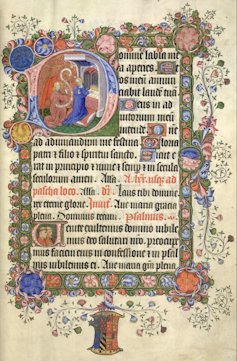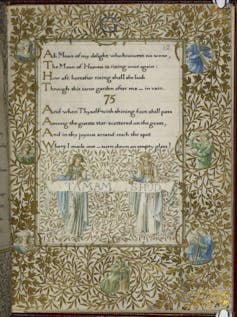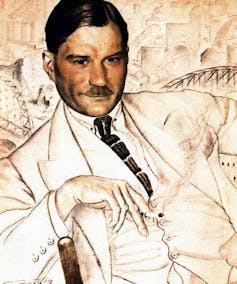XX2P.COM
music, art, poetry & more
12.10.25
9.10.25
The desire to be seen naked, do you have that?
The desire to be seen naked, do you have that? It is apparently not that unusual. I discuss this desire.
Some people enjoy being seen naked for a mixture of psychological, social, and biological reasons. One important factor is body confidence. For individuals who feel comfortable in their own skin, being seen without clothes can reinforce a sense of pride and acceptance of their body. It may serve as a way of affirming that their body is attractive, healthy, or desirable.
Another aspect is the sense of liberation that comes with nudity. Clothing is often linked to rules, status, or social expectations. By removing it, some people experience freedom from those restrictions. In this way, being naked in front of others can feel empowering, almost like a small act of rebellion against convention.
There is also a strong social and emotional element. Being seen naked can create intimacy, whether in a romantic or non-romantic context. Allowing someone else to view one’s body involves vulnerability and trust, and for some people, that vulnerability is part of what makes the experience exciting or meaningful.
Finally, there is the possibility of erotic enjoyment. For some, exhibitionism—deriving pleasure from being observed in a sexual or semi-sexual context—can be stimulating. This may be tied to the thrill of breaking taboos, the enjoyment of attention, or the heightened sense of risk.
Academic note: In psychology, exhibitionism is often classified as a paraphilic interest when it involves a compulsion to expose one’s genitals to non-consenting strangers. However, the term is also used more broadly in sociology and cultural studies to describe consensual or socially sanctioned practices of displaying the body. In this wider sense, exhibitionism can be linked to self-esteem, identity formation, and the negotiation of social boundaries around privacy and modesty. It is important to distinguish between the clinical diagnosis (which carries implications of distress or harm) and the everyday, consensual enjoyment some people find in being observed naked.
G P Thomson
28.9.25
50 years of Linder’s art
50 years of Linder’s art – feminism, punk and the power of plants
Currently on show at the Royal Botanic Garden in Edinburgh, Linder’s retrospective Danger Came Smiling showcases half a century of trailblazing art. The exhibition delves into her fascination with plants, inviting the viewer to see beyond traditional notions of gender and sexuality.
For the Liverpool-born artist, there is enchantment in creating imaginary worlds, generating new meanings and inviting others in. Turning toward botanical themes marks a compelling evolution in Linder’s art practice. This new twist fuses a more glamorous side of her punk-feminist roots with symbolic power of the natural world.
Her fascination with plants isn’t just visual, it’s conceptual. In Danger Came Smiling she uses botanical imagery to examine how nature has historically been feminised, controlled and aestheticised, as she explores plant reproduction, horticultural histories and the cultural symbolism associated with flowers.
The Goddess Who Lives in the Mind (2020) features a gigantic lily with stamens protruding from a glamorous woman’s body, while Double Cross Hybrid (2013) reveals an enormous rose blooming out of a woman’s stomach – a monstrous “other” taken away from the domestic space, dressed in botanical themes.
A living critique of gendered power structures – the way access to power, privilege and resources is disproportionately dominated by men – the exhibition is rooted in the organic and the ephemeral, with echoes of her earlier subversive photomontages.
Linder is best known for this disruptive technique – cutting and pasting images from disparate sources to create new, often shocking visual narratives. Her work embodies the radical spirit of early 20th-century European Dada and Surrealists such as Hannah Höch, George Grosz and Dora Maar who pioneered the method, amalgamating images from popular media, magazines and photography into political and satirical statements.
Her critique of the commodification of the female body also draws inspiration from feminist artists such as Hannah Wilke, Carolee Schneemann and Martha Rosler. Here, her photomontages are like jigsaw configurations that blur the boundaries between art, ecology and mythology.
Linder’s outdoor performance A Kind of Glamour About Me was staged to great effect this summer at the opening night of the Edinburgh Art Festival. A dazzling, genre-defying spectacle, it fused Holly Blakey’s visceral choreography, Maxwell Sterling’s haunting soundscapes and Ashish Gupta’s flamboyant fashion. Showcasing an eerie synthesis of body and nature, it turned the Royal Botanic Garden into a site of transformation and storytelling. Here visitors can enjoy it as a video installation.
An improvised take on the myth of Myrrha – the Greek mythological figure who was turned into a myrrh tree after having sex with her father – three dancers in exquisite costumes appear as shifting identities, with one eventually merging into a tree for protection.
Linder draws inspiration from the mythical symbolism of plants. The word glamour in her work comes from the Scots word glamer, which means a magic spell – witches in 16th-century Scotland were hanged for casting “glamer”. Traces of Linder’s photomontage style spill over into the verdant green of the gardens – gigantic lips appear out of nowhere, like a haunting Cheshire cat’s smile.
Linder reclaims women in history and mythology as forbears and heroines. Just like her photomontages, whether in live performance or in video, they are made of parts and fragments that come together in ethereal improvisations.
Her eerie video work Bower of Bliss (2018) is inspired by the detention of Mary Queen of Scots at Chatsworth House in the late 16th century (Linder was in residence there in 2017). In the video, Mary and her custodian Bess of Hardwick are dressed in lavish, colourful costumes designed by Louise Gray. They move to a Maxwell Sterling composition that signals the pleasures and boredom of confinement through clinging, holding and posing. Here we see fabrication mixed with history, witch with knight, warden with prisoner.
Featuring themes of female empowerment and enchantment with nature, Linder’s signature tableaux vivants (living pictures), reveal performers’ dramatically made-up eyes and lips covered with herbs and flowers from the kitchen garden.
Bower of Bliss refers to an enchanted garden from Edmund Spence’s poem The Faerie Queene. The work was originally recreated for Art on the Underground as a billboard at Southwark station in 2018, featuring women who worked on London Underground and performed in the dance work created from it.
Linder’s newer digital works appear to depart from the DIY-rebellion aesthetic of the radical punk era of the 1970s and early 1980s (such as her iconic Buzzcocks’ Orgasm Addict album cover). Cut-and-paste aggression, visual noise, and an anti-polish vibe were reactions to her life story at the time, when she was fighting the feminist cause.
Newer works acknowledge the limitations of punk’s visual language and Linder’s desire to move beyond shock value toward more ritualistic, poetic and nature-infused forms of resistance. She invites us to see plants not as decorative or scientific specimens, but as symbols of survival, sensuality and subversion. These works recycle her artistic technique of combining imagery from domestic or fashion magazines with pornography and other archival material featuring petals, plants or marine life.
Her botanical turn is both a continuation of her feminist sensibility and a new way of engaging with the world, through the slow, radical language of nature. Cleansing the wounds of women represented in her works as well as her own, it leans into the language of plants as a profoundly healing experience.
It is a joy to watch this groundbreaking icon evolve her practice, transformed from an angry young rebel to an accomplished multimedia artist. At the age of 71, Linder continues to challenge societal norms while embracing the beauty and complexity of identity, cementing her legacy as a trailblazer in contemporary art.
Danger Came Smiling is on at Inverleigh House, the Royal Botanic Garden, Edinburgh, until October 19, and then transfers to the Glynn Vivian Art Gallery, Swansea, in November 2025.
Looking for something good? Cut through the noise with a carefully curated selection of the latest releases, live events and exhibitions, straight to your inbox every fortnight, on Fridays. Sign up here.![]()
Katarzyna Kosmala, Chair in Culture Media and Visual Arts, University of the West of Scotland
This article is republished from The Conversation under a Creative Commons license. Read the original article.
14.9.25
New exhibition explores history of decorative borders: from medieval manuscripts to William Morris
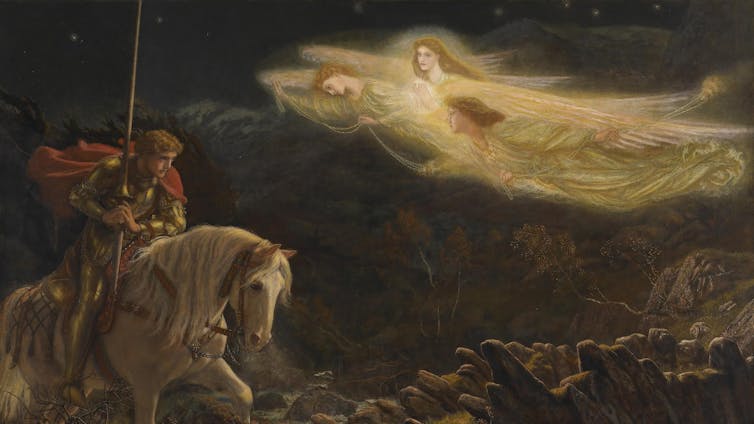
The Nature of Gothic, at the Blackburn Museum and Art Gallery, explores the history of decorative borders over hundreds of years. It covers the period from the late medieval age to the Arts and Crafts Movement of the late 19th and early 20th centuries.
In the late medieval period, manuscripts that were produced in northern Europe often featured decorative borders that framed the text of both religious and secular works. These borders featured motifs from the classical world such as swirling acanthus leaves, Greek meanders and intricate patterns which interlace flowers, leaves and vines.
From the early decades of the 13th century these largely naturalistic forms, used to enhance the visual appeal of the page, began to be used more widely. They were added to the front of books and important sections within them, such as the beginnings of individual psalms or chapters of the Bible.
These naturalistic frames provided platforms tangible enough for figures, animals and grotesques to be placed upon. These characters often present an alternative reality to the verses of the psalms or Aristotle’s Libri Naturales that they decorate.
The meaning and intent of these spaces is yet to be fully understood. The battle of a miniature knight versus a fully armed snail, for example, might be interpreted as the moral fight against evil in the margins of the psalm. But the meaning of a tiny man pushing another in a wheel barrow adjacent to the beginning of Aristotle’s Libri Naturales is less clear.
The great enthusiasm for the illustrated grotesques (hybrid creatures which combine human and fantastical animal forms) in these peripheral spaces began in northern France. Texts produced by the monastic schools which emerged with the rise of scholasticism in the late 12th century often carried this type of decoration.
I have been collaborating with the Blackburn museum for over a decade, and have curated this exhibition alongside Anthea Purkis, its curator of art. This exhibition features some early examples of this technique from manuscripts held by the museum as well as examples on loan from the British Library.
In the exhibition
Although the names of very few medieval artists whose work appeared in manuscripts are known, Blackburn Museum and the British Library both hold examples of the intricate and sophisticated work of two known illuminators.
They are Mâitre Françoise, who ran his business in Paris in the third quarter of the 15th century, and Herman Scheere – perhaps the most renowned illuminator in London in the 15th century.
From his workshop on London Bridge, Scheere produced flowing extravagant frames for the pages of his books. His book the Bedford Psalter and Hours, (loaned by the British Library and on display in the exhibition) was commissioned by the younger brother of King Henry V. This aristocratic commission demonstrates the success of Scheere’s business and the appetite for the decorated border.
Some 15th century examples from northern Europe also show the influence of Islamic art on northern European aesthetics. A 15th-century Qur'an manuscript from the John Rylands Library and Research Centre in Manchester is on display in the exhibition. muh .aqqāq script is used for Arabic primary text while the interlinear script in Persian and Eastern Turkish is in minuscule naskh script. This reflects the various communities for whom the book was intended.
The beginnings of the chapters of the Qur'an manuscript, the ṣuwwar, are surrounded by borders filled with flowing abstract forms. They’re reminiscent of, but not imitative of, the natural world. This decorative tradition would have cross pollinated with western European cultures through trade and conflict.
Examples of Persian calligraphy also demonstrate the persistence of the trend for decorative borders at this time. The Rylands’ Persian MS 10, an album completed before 1785–1786AD, features an entwined Arabic calligraphy composition formed from two slogans Tawakkaltu bi-maghfirat al-Muhaymin (I entrust myself to the forgiveness of the Guardian) in black, and Huwa al-Ghafūr Dhū-al-Raḥmah (He is the All-Forgiving Lord of Mercy) in red thuluth script. Two dark indigo blue borders bear delicate silver and gold foliage surrounding a wide margin embellished with vibrant floral flourishes.
Migration to the printed page
In 15th century Germany, Johannes Gutenberg invented the moveable-type printing press. His new technology produced a codex (an ancient manuscript text in book form) that looked like a traditional manuscript with regard to text and margins.
Rubrication – the decoration of letters in coloured inks – was added by hand to the first printed books. As the ability of printers to produce more nuanced illustrations accelerated, the decorated border survived and thrived. Indeed, its importance as part of the aesthetic in terms of how a book should look to an early modern reader drove forward innovations in technology.
The Blackburn Museum’s collection of early printed books is full of examples of the new technology of print accommodating the decorative frame.
Falling in and out of favour
The decorated frame fell out of favour in the 16th and 17th centuries. For western European readers it began to appear old fashioned. But it returned during the Industrial Revolution, thanks to the work of the Pre-Raphaelite movement.
Pre-Raphaelite artists reached back to the medieval period for their inspiration as well as artistic practice. Dante Gabriel Rossetti, William Morris, Sir Edward Coley Burne-Jones, Arthur Hughes and their associates set out to reject the values and industrial production of the 19th century. Medieval narratives found new audiences in Pre-Rapahelite art such as Arthur Hughes’ Sir Galahad, the Quest for the Holy Grail. In the subsequent Arts and Crafts Movement, books, ceramics, textiles and furniture were produced with minimal mechanical intervention. The medieval decorative frame thrived across various media.
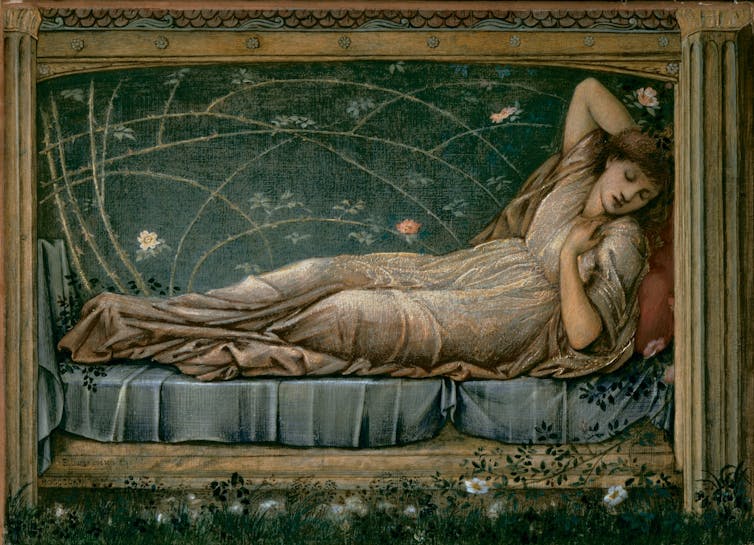
William Morris’ hand-written copy of The Rubaiyat of Omar Khayyam provides a compelling example of the after-life of the medieval margin. On each page, the text is surrounded by a lush decorated border which is punctuated by cameos that were designed by Burne-Jones and painted by Charles Fairfax Murray.
The Nature of Gothic gives visitors the opportunity to compare the work of medieval masters of decorative art with the work produced by the Pre-Raphaelites and the Arts and Crafts Movement. Contemporary artist Jamie Holman and ceramicist Nehal Aamir also contribute modern interpretations of the decorated frame.
The result is a celebration of the verdant decorative frames which twist and turn through time, illuminating art of both the past and present.
The Nature of Gothic is at the Blackburn Museum and Art Gallery from September 13 to December 13.
Looking for something good? Cut through the noise with a carefully curated selection of the latest releases, live events and exhibitions, straight to your inbox every fortnight, on Fridays. Sign up here.
With thanks to Jake Benson for the translation of Persian 10.![]()
Cynthia Johnston, Senior Lecturer in History of the Book, School of Advanced Study, University of London
This article is republished from The Conversation under a Creative Commons license. Read the original article.
12.8.25
Animal Farm at 80: George Orwell’s enduring commitment to socialist revolution
Glenn Burgess, University of Hull
During the early years of the second world war, George Orwell believed that England’s revolutionary moment had arrived. The defeat at Dunkirk had discredited the country’s ruling elite. Their bungling had left England on the verge of invasion and defeat.
To win the war and defeat fascism, a social revolution was needed, as Orwell explained in his socialist manifesto, The Lion and the Unicorn (1941). Now was the time, he argued, to turn “this war into a revolutionary war and England into a socialist democracy”.
Orwell believed this revolution, though likely to be violent, would also conserve much, setting free “the native genius of the English people”. England’s long liberal tradition would be retained and enhanced, and the revolution would be more patriotic than class-based:
From the English-speaking culture … a society of free and equal human beings will ultimately arise.
However, while Orwell never overtly abandoned his commitment to socialist revolution, he quickly came to lose heart in its imminence. He came to think that the war would defeat fascism but not totalitarianism, and that real socialism still lay a long way in the future.
In this mood, he wrote Animal Farm in the last months of 1943 and first half of 1944 – with much support and possibly substantial input from his first wife, Eileen O’Shaughnessy. August 17 2025 marks the 80th anniversary of the novel’s publication.
This article is part of Rethinking the Classics. The stories in this series offer insightful new ways to think about and interpret classic books and artworks. This is the canon – with a twist.
In September 1944, just after completing Animal Farm (it wouldn’t be published for another year), Orwell explained some of his wider purposes in a letter to the American intellectual and fellow liberal socialist, Dwight Macdonald.
The Soviet Union, Orwell thought, really did provide people with hope in a socialist future, and for that reason it would not be good to see it destroyed. But at the same time, working people in the west needed “to become disillusioned about it and to realise that they must build their own Socialist movement without Russian interference”. The success of this might then have a “regenerative influence upon Russia” itself.
Orwell, Zamyatin and Animal Farm
It was while writing Animal Farm that Orwell first learned something of substance about the Russian author Yevgeny Zamyatin and his dystopian satire, We, published in 1924.
That book became a significant influence for Nineteen Eighty-Four (1949). Though Orwell did not read We in full until late 1945, he knew a little about the book from Gleb Struve’s anthology 25 Years of Soviet Russian Literature in early 1944, and wrote to Struve to tell him it had whetted his appetite to know more about Zamyatin.
Struve’s anthology quotes a passage that Orwell would pick out as important. In it, one character declares that “our revolution was the last and there can never be another”. To which his interlocutor responds: “Just like numbers, revolutions are infinite and there can never be a final one.”
When he adapted Animal Farm for the radio in 1946, Orwell had Napoleon the pig say: “When there has been one rebellion, there can never be another.” But he must surely have had in mind the reply: “There can always be another.”
It was again to Macdonald that Orwell spelled out the implications of Animal Farm in December 1946. Though “primarily” a “satire on the Russian revolution”, Orwell was clear it had “wider application” as a denunciation of “that kind of revolution (violent, conspiratorial) that can only lead to a change of masters”. Revolutions can improve things, he wrote, but only when “the masses … know how to chuck out their leaders as soon as … they have done their job”.
Orwell had earlier written in September 1944 that “all revolutions are failures, but they are not all the same failure”. They all fail because perfection is beyond human grasp – the challenge is to fail better and in ways that improve things, as he told Macdonald:
If people think I am defending the status quo [in Animal Farm], that is … because they have grown pessimistic and assume that there is no alternative except dictatorship and or laissez faire capitalism.
Animal Farm is one of those very short and very accessible books that defy easy interpretation. Classic examples are Niccolo Machiavelli’s The Prince (1532) and Thomas More’s Utopia (1516). Though political, they are not manifestos, unlike Orwell’s The Lion and the Unicorn – that book sought to mobilise people behind a clear vision of an attainable better future.
Animal Farm, in contrast, is a melancholy reflection on the corruption of revolution, and the need to keep looking for a better one.
Beyond the classics
As part of the Rethinking the Classics series, we’re asking our experts to recommend a book or artwork that tackles similar themes to the canonical work in question, but isn’t (yet) considered a classic itself. Here is Glenn Burgess’s suggestion:
Orwell could not have read anything by Yevgeny Zamyatin other than his dystopian novel, We. It is not much easier for us. Little of Zamyatin’s other fiction is currently in print in English translation, apart from a very recent collection of a few stories from Alma Classics.
His two short satires of middle-class English sanctimonious hypocrisy, which Orwell would have greatly enjoyed, were once available as Islanders and the Fisher of Men. Penguin also used to publish a collection of Zamyatin’s diverse short fiction: The Dragon and Other Stories. This contains, among much else, “two tales for grown-up children” (a description that could apply to Animal Farm). One of them is a two-page story, The Church of God, which tells what happens when violent acts are used to pursue noble (in this case, holy) purposes.
Like Animal Farm, the story is a reflection on the relationship of ends to means. Zamyatin’s stories include more on this theme. He was an early supporter of the Bolsheviks, and an equally early critic of the Bolshevik revolution.
This article features references to books that have been included for editorial reasons, and may contain links to bookshop.org. If you click on one of the links and go on to buy something from bookshop.org The Conversation UK may earn a commission.![]()
Glenn Burgess, Professor of Early Modern History, University of Hull
This article is republished from The Conversation under a Creative Commons license. Read the original article.
18.7.25
‘Nah, it doesn’t look like a 🐌’ | Tate Kids
View on YouTube
9.7.25
Raqib Shaw’s bonsai tips - ‘not a good idea to have an active social life' 🌳 | Tate
View on YouTube
8.7.25
'The liveliness of Country' – Emily Kam Kngwarray | Tate
View on YouTube
2.7.25
Kids React to Art - Cildo Meireles's Babel | Tate #kidsreact #funnyvideo
View on YouTube
1.7.25
How do artists imagine the world in 2050?| Tate
View on YouTube
25.6.25
Zarina Bhimji on becoming an artist 📸 | Tate #photography #art #contemporaryart
View on YouTube

